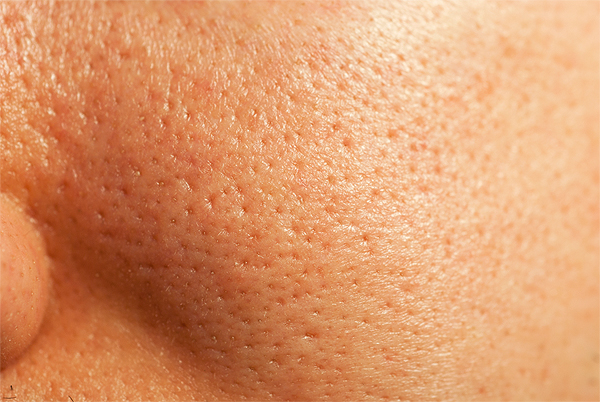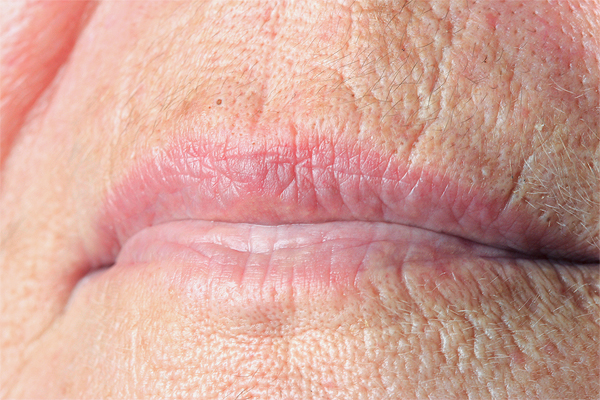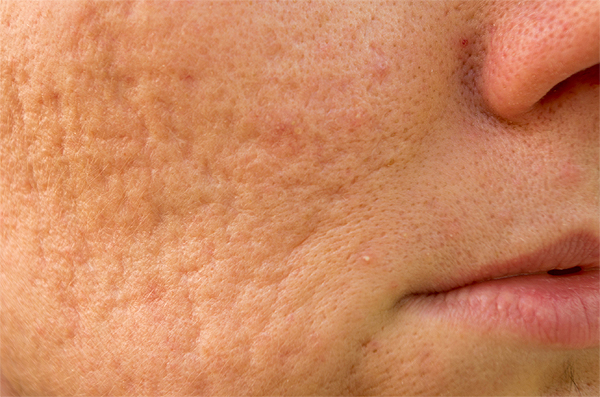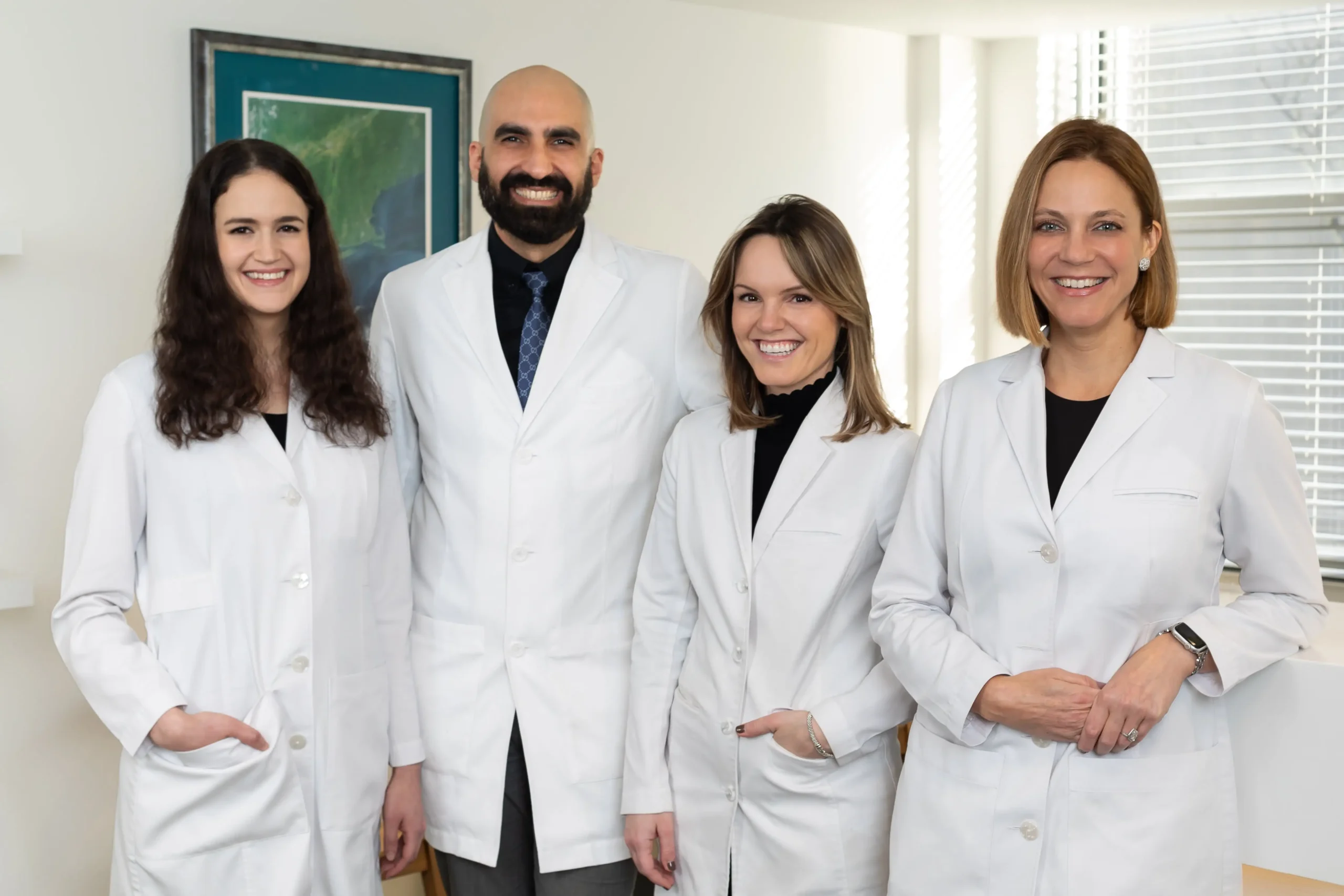Microneedling
Jump To
Conveniently located to serve Boston, MA

Microneedling (also referred to as skin needling) is a minimally invasive skin rejuvenation procedure. When done properly, patients can see improvement in skin texture and firmness, as well as reduction in scarring, pore size, and stretch marks.
How Does Microneedling Work?
A device with very fine needles is used to puncture the skin to create a controlled skin injury. This controlled skin injury helps rejuvenate the skin in two ways. First, the actual penetration of the needle creates a channel that triggers the body to fill the wound with new elastin and collagen. Second, serums and vitamins can be applied to the skin before and immediately after to increase efficacy of the product.
While you may have seen at-home devices claiming to do the same thing, the microneedling done at a doctor’s office is completely different than the kits marketed for at home use in that those used at a physician’s office can penetrate deeper into the skin and give better results.
Who Is an Ideal Candidate for Microneedling?
Microneedling is an excellent alternative to more invasive cosmetic procedures, making it ideal for people who want effective rejuvenation and resurfacing results without a long recovery period. It is also safe for all skin tones.
Microneedling is a treatment performed in our office by one of our board-certified dermatologists. It creates many tiny holes or controlled wounds in the skin which as they heal, build new collagen and create healthier skin. Most patients require multiple treatments to realize optimal results. Also, the results are not immediate. Since microneedling stimulates your skin to produce collagen and elastin through small, controlled injuries, your skin needs time to heal after treatment. The majority of patients can expect to see results about six weeks after a microneedling session.
Microneedling is often very effective at treating the appearance of acne scars, fine lines and large pores. However, you should not have the procedure while you have active acne or active cold sores. Talk with our dermatologists about first getting your acne under control with creams, pills or other treatments, and keep in mind that microneedling may be a possibility in the future for your acne scars.
There is some healing tim e for microneedling after each treatment and your dermatologist can talk to you about what to expect in the days after your treatment and how to care for your skin during that time.
e for microneedling after each treatment and your dermatologist can talk to you about what to expect in the days after your treatment and how to care for your skin during that time.
Microneedling can help with the appearance of acne scars and normal scars that result from injuries or surgical wounds, yet the treatment is not appropriate for keloid scars. Keloids are large, raised scars that appear after a skin wound. They are not the same as acne scars. Speak with our dermatologists if you have concerns about keloid scars; we can offer advice and treatment options for these special types of scars.
Don’t hesitate to ask us if microneedling is right for you. We will consult with you to ensure that microneedling is safe and effective for your individual situation.
The Microneedling Procedure
During your visit, a topical anesthetic cream is applied before the procedure begins in order to numb the region to any discomfort or pain. Microscopic punctures are then made in the skin using a pen-like microneedling tool containing over 30 microneedles. The tool makes such tiny pinpricks that they are barely noticeable even after the procedure.
The microneedles can penetrate to a depth of almost 3 mm, deep enough to stimulate collagen and elastin production in the skin for smoother, younger-looking skin. Many medspas and spas also offer microneedling but those treatments are often too superficial and the needles don’t go deep enough to get to the route of the problem. Because our treatment is done by physicians, it can go deeper into the skin producing better results.
Depending on the size of the treatment area, the entire microneedling procedure may take anywhere from a few minutes to 20 minutes. Once the procedure ends, a serum may be administered to help calm your skin.
What will Microneedling do for you?
- Minimizes pore size
- Reduces wrinkles and fine lines (such as upper lip wrinkles or “smoker’s lines”)
- Rejuvenates skin
- Improves the appearance of stretch marks
- Improves the appearance of scars
- Improves the appearance of both indented (atrophic) and raised acne scarring
- Reduces skin discoloration and dullness
- Addresses sun spots and other pigmentation issues
Treatment Aftercare
Immediately after the procedure, the skin will be very red and raw and may even be bleeding, and sun protection and gentle skincare are a priority. Healing takes place in an average of three to four days.
Multiple treatment sessions will be required. Results will appear gradually over time as the tissues produce new healthier collagen.
Microneedling Cost
The cost of microneedling depends on where you choose to go to undergo this popular cosmetic dermatology treatment and may also depend on the experience of the treating provider. The exact price is also impacted by the number of treatment sessions required.
Schedule Your Treatment Session
To schedule your treatment session for microneedling in Boston, contact The Dermatology Institute of Boston today. We will be happy to answer any questions you may have.
The Dermatology Institute of Boston Microneedling FAQs
What does microneedling do for your skin?
Microneedling uses tiny needles that penetrate the skin to stimulate a controlled injury response. The needles penetrate deep enough to cause your skin to produce extra collagen and elastin in response but not deep enough to cause permanent injury.
In effect, microneedling rejuvenates skin, improving its texture and helping reduce the appearance of fine lines, scars, pores and wrinkles. Microneedling also gives skin a healthier, brighter and more uniform look.
What is microneedling best for?
How long does it take to see results from microneedling?
Is microneedling painful?
Microneedling is not painful, but some patients do report mild discomfort. The discomfort level depends on the individual, as many patients do not find the treatment at all uncomfortable.
Your physician will apply a numbing cream to your skin before the treatment to help maintain your comfort. After your treatment, your skin may feel and appear irritated for a few days. Be sure to protect your skin from the sun and follow your dermatologist’s skin care instructions. Redness and discomfort should resolve days after your treatment.
Are microneedling results permanent?
Some microneedling results are permanent. If you view the microneedling before and after photos of patients with acne scarring, for example, you’ll see a permanent improvement. Stretch mark reduction can also be permanent if there are no significant weight changes in the future.
However, other goals may need follow-up treatments down the road. Skin rejuvenation, wrinkle reduction, and other cosmetic issues may require treatments approximately every six months to maintain results.
Do dermatologists recommend microneedling?
The physicians at the Dermatology Institute of Boston evaluate each patient on a case-by-case basis to ensure that microneedling is the right choice. Your dermatologist will let you know if microneedling is appropriate in your situation. In general, as long as a patient is not pregnant or breastfeeding or does not have an active skin infection, they are a potential candidate for microneedling.
Microneedling is one treatment among many available in dermatologists’ toolkits. Your dermatologist may advise combining microneedling with other therapies or medications to achieve your goals. It all depends on your unique situation.
Can I shower after microneedling?
Is microneedling better than a chemical peel?
Does microneedling improve skin texture?
What are the dos and don’ts of microneedling?
- Don’t try microneedling at home. Since microneedling requires skin penetration, only a qualified physician should administer the treatment. Home microneedling can cause permanent skin damage and carries infection risks. Plus, home microneedling kits do not penetrate as deeply as physician treatments and cannot provide the same benefits.
- Don’t expose your treated skin to sun or heat until it heals from microneedling. Forgo hot showers or steam during healing.
- Don’t pick at dry or flaking skin. Moisturize your skin to avoid dryness.
- Don’t be too concerned if your skin is reddened and irritated after a microneedling session. Call your dermatologist if the redness persists or your skin becomes painful.
- Do inform your dermatologist of your medical history before microneedling. You should let them know about any chronic conditions as well as skin issues like cold sores, eczema, fungal infections, etc.
- Do follow your dermatologist’s instructions concerning microneedling. Make sure to adhere to your aftercare regimen, protect your skin from sun exposure, and use a gentle moisturizer.
- Do contact the Dermatology Institute of Boston for all your microneedling questions and skincare needs.










